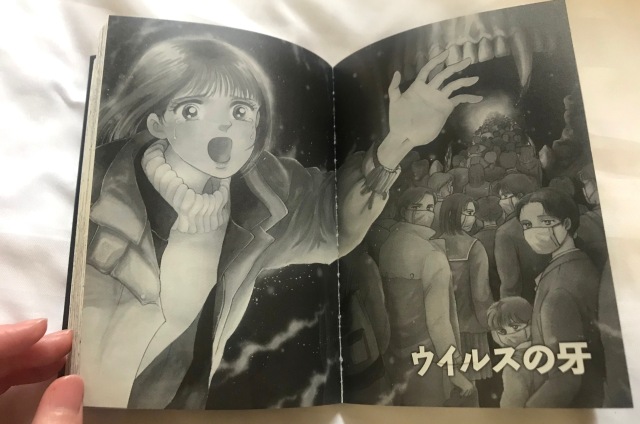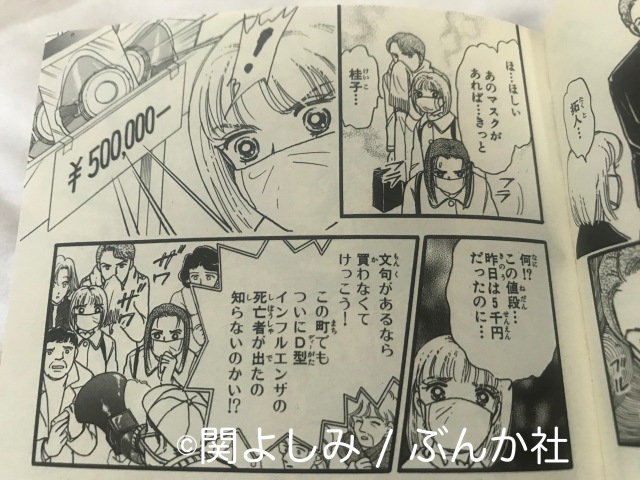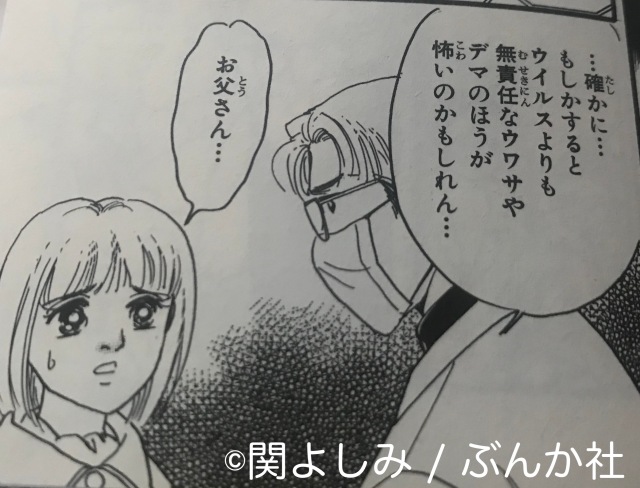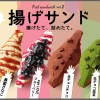
Manga artist draws amazing parallels between fiction and reality.
The last two years have thrown us all a curveball, with the coronavirus pandemic completely changing the world in ways we never could’ve predicted, making reality feel like a surreal scene from a movie or a page out of a Japanese manga.
One manga that comes to mind during these times is Virus Fang, which has become a hot topic lately for the way it depicts the pandemic-gripped society we’re currently living in. That wouldn’t be surprising if the work was written in the past couple of years, but what’s giving everyone goosebumps is the fact that it was written 25 years ago.
https://twitter.com/JAPAN_manga_bot/status/1247156675577966593That’s right — this virus-centric manga was written around a quarter of a century before the pandemic, and it reads like a prophecy for what we’re all experiencing today. Adding an extra layer of eeriness to it all is the fact that it was written by Yoshimi Seki, an acclaimed horror manga artist.
Before we get into the manga, let’s take a quick look at the author’s background. 64-year-old Seki is known for a particular style of horror that juxtaposes shojo-style manga with doomsday storylines, highlighting the gruesomeness of humankind rather than ghosts or other mysterious phenomena.
Seki’s Madhouse, for example, tells the story of a family who moves next door to a house where a murder occurred. It contains a series of shocking and surreal scenarios, including an encounter with the old man from next door, who enters the house naked, licks raw fish from the refrigerator and suddenly defecates.
▼ Madhouse
【商品情報】関よしみ傑作集マッドハウス。「マッドハウス」に登場する老人の、「うんうん、これじゃ、この味!」がイヤすぎて、何回も読んでしまいます。https://t.co/LKVXHlJeuN pic.twitter.com/CDTrMDW3YK
— 書肆鯖【ショシサバ】 (@bookssubba) November 4, 2017
Seki is a popular author with a cult following, and her works are often described as “manga that’ll leave you traumatised”. That’s certainly true of the manga currently creating a buzz online — Virus Fang, from Yoshimi Seki’s Mad Papa Masterpiece Collection.
▼ Virus Fang was first published in 1997.
The story revolves around the main character of Hitomi, a third-year junior high school student studying for the high school entrance exams, a time of intense stress for students in Japan.
Against this bubbling backdrop of stress and tension, news arrives that Influenza D, which has an extremely high infectivity and fatality rate, has spread overseas, with the number of deaths exceeding 30,000. Despite a travel ban being put in place to stop people from affected countries visiting, people in Japan end up becoming infected with the virus, and a sense of fear and panic begins to permeate towns and schools.
With no vaccine or cure in sight, people become swept up in hoaxes, including the belief that “ambulances take patients straight to the crematorium”.
What’s particularly interesting about this work is that rather than focus on the fear of the disease, it accurately depicts a world struggling to cope with the spread of a virus…and the mindset of people who are easily misled by hoaxes.
Throughout the manga, it’s clear that human psychology is more frightening than the illness itself, and this is expressed through events where:
・ People begin to scramble for masks, causing prices to skyrocket
・ Shady “virus prevention products” are sold at high prices
・ Schools close, companies close, and going out is restricted
・ The medical system collapses
・ Fear of infection sparks animosity between close friends
・ Chaos ensues everywhere due to hoaxes and rumours
It’s often said that fact is stranger than fiction, but in the case of this manga, fiction has become a true reflection of reality. Those six plot points above sound a lot like everything we’ve experienced these past two years, although the price of masks increased three-fold in Japan instead of 100-fold as they do in the manga.
▼ According to this scene, masks were 5,000 yen (US$43.40) one day, 500,000 yen the next.
While the behaviour of panicked, confused individuals plays a big role in the manga, correct preventive measures and attitudes are also addressed, through the father of the main character, who works as a pharmacist. Hitomi’s father acts as the voice of reason throughout the story, asserting from the start that people should wear masks, gargle and wash their hands as basic ways to prevent infection.
In one scene, while watching the news on TV, there’s a poignant moment between father and daughter, where he tells her:
“Perhaps irresponsible rumours and hoaxes are more frightening than viruses…”
Sadly, this father’s premonition from 25 years ago has proven to be right today.
To prevent infection during a pandemic, you don’t just need to rely on vaccines, cures, and proper hygiene. You also need to arm yourself with knowledge, in order to shield yourself from hoaxes and rumours that have no truth to them.
It’s a theme that makes its presence felt throughout the manga, and it’s one we can learn from today in this pandemic era. Fear can make people react in unusual ways, and Seki’s experience in exploring the dark side of human nature gave her a foresight into the challenges we face today.
Seki’s Virus Fang is hard to find in print, but electronic versions can be purchased online (see links below) or read for free on Kindle Unlimited. And if you’d like to check out another manga filled with pandemic predictions that reflect reality, don’t forget to take a look at Akira, which went one step further by adding the Tokyo 2020 Olympics to the prophecy.
Related: Amazon Japan, Comic Cmore, Renta!, Book Live, Manga Oukoku
Top image ©SoraNews24
● Want to hear about SoraNews24’s latest articles as soon as they’re published? Follow us on Facebook and Twitter!
[ Read in Japanese ]




 Could Coronavirus be helping prevent the spread of influenza? Japanese Twitter speculates
Could Coronavirus be helping prevent the spread of influenza? Japanese Twitter speculates Japan creates world’s first edible face mask…from melon bread
Japan creates world’s first edible face mask…from melon bread Japanese mouthwash effective against coronavirus, according to Osaka Governor
Japanese mouthwash effective against coronavirus, according to Osaka Governor Masks should still be worn indoors, majority of Japanese people in poll say
Masks should still be worn indoors, majority of Japanese people in poll say Is it time for manga and anime to start introducing the coronavirus outbreak to their settings?
Is it time for manga and anime to start introducing the coronavirus outbreak to their settings? Foreigner’s request for help in Tokyo makes us sad for the state of society
Foreigner’s request for help in Tokyo makes us sad for the state of society Japanese city loses residents’ personal data, which was on paper being transported on a windy day
Japanese city loses residents’ personal data, which was on paper being transported on a windy day Harajuku Station’s beautiful old wooden building is set to return, with a new complex around it
Harajuku Station’s beautiful old wooden building is set to return, with a new complex around it Akihabara pop-up shop sells goods made by Japanese prison inmates
Akihabara pop-up shop sells goods made by Japanese prison inmates Historical figures get manga makeovers from artists of Spy x Family, My Hero Academia and more
Historical figures get manga makeovers from artists of Spy x Family, My Hero Academia and more French Fries Bread in Tokyo’s Shibuya becomes a hit on social media
French Fries Bread in Tokyo’s Shibuya becomes a hit on social media We try out “Chan Ramen”, an underground type of ramen popular in the ramen community
We try out “Chan Ramen”, an underground type of ramen popular in the ramen community Fried sandwiches arrive in Tokyo, become hot topic on social media
Fried sandwiches arrive in Tokyo, become hot topic on social media “Hey, Japanese taxi driver, take us to the best seafood joint in Otaru!”
“Hey, Japanese taxi driver, take us to the best seafood joint in Otaru!” Our Japanese reporter visits Costco in the U.S., finds super American and very Japanese things
Our Japanese reporter visits Costco in the U.S., finds super American and very Japanese things McDonald’s new Happy Meals offer up cute and practical Sanrio lifestyle goods
McDonald’s new Happy Meals offer up cute and practical Sanrio lifestyle goods Japanese ramen restaurants under pressure from new yen banknotes
Japanese ramen restaurants under pressure from new yen banknotes Studio Ghibli releases new action figures featuring Nausicaä of the Valley of the Wind characters
Studio Ghibli releases new action figures featuring Nausicaä of the Valley of the Wind characters New private rooms on Tokaido Shinkansen change the way we travel from Tokyo to Kyoto
New private rooms on Tokaido Shinkansen change the way we travel from Tokyo to Kyoto Red light district sushi restaurant in Tokyo shows us just how wrong we were about it
Red light district sushi restaurant in Tokyo shows us just how wrong we were about it Tokyo Tsukiji fish market site to be redeveloped with 50,000-seat stadium, hotel, shopping center
Tokyo Tsukiji fish market site to be redeveloped with 50,000-seat stadium, hotel, shopping center All-you-can-drink Starbucks and amazing views part of Tokyo’s new 170 meter-high sky lounge
All-you-can-drink Starbucks and amazing views part of Tokyo’s new 170 meter-high sky lounge Beautiful Ghibli sealing wax kits let you create accessories and elegant letter decorations【Pics】
Beautiful Ghibli sealing wax kits let you create accessories and elegant letter decorations【Pics】 Studio Ghibli releases Kiki’s Delivery Service chocolate cake pouches in Japan
Studio Ghibli releases Kiki’s Delivery Service chocolate cake pouches in Japan New definition of “Japanese whiskey” goes into effect to prevent fakes from fooling overseas buyers
New definition of “Japanese whiskey” goes into effect to prevent fakes from fooling overseas buyers Studio Ghibli unveils Mother’s Day gift set that captures the love in My Neighbour Totoro
Studio Ghibli unveils Mother’s Day gift set that captures the love in My Neighbour Totoro More foreign tourists than ever before in history visited Japan last month
More foreign tourists than ever before in history visited Japan last month New Pokémon cakes let you eat your way through Pikachu and all the Eevee evolutions
New Pokémon cakes let you eat your way through Pikachu and all the Eevee evolutions Sales of Japan’s most convenient train ticket/shopping payment cards suspended indefinitely
Sales of Japan’s most convenient train ticket/shopping payment cards suspended indefinitely Sold-out Studio Ghibli desktop humidifiers are back so Totoro can help you through the dry season
Sold-out Studio Ghibli desktop humidifiers are back so Totoro can help you through the dry season Japanese government to make first change to romanization spelling rules since the 1950s
Japanese government to make first change to romanization spelling rules since the 1950s Ghibli founders Toshio Suzuki and Hayao Miyazaki contribute to Japanese whisky Totoro label design
Ghibli founders Toshio Suzuki and Hayao Miyazaki contribute to Japanese whisky Totoro label design Doraemon found buried at sea as scene from 1993 anime becomes real life【Photos】
Doraemon found buried at sea as scene from 1993 anime becomes real life【Photos】 Tokyo’s most famous Starbucks is closed
Tokyo’s most famous Starbucks is closed One Piece characters’ nationalities revealed, but fans have mixed opinions
One Piece characters’ nationalities revealed, but fans have mixed opinions We asked a Uniqlo employee what four things we should buy and their suggestions didn’t disappoint
We asked a Uniqlo employee what four things we should buy and their suggestions didn’t disappoint Princesses, fruits, and blacksmiths: Study reveals the 30 most unusual family names in Japan
Princesses, fruits, and blacksmiths: Study reveals the 30 most unusual family names in Japan Overseas otaku make huge donation of masks to real-life Japanese Love Live! town
Overseas otaku make huge donation of masks to real-life Japanese Love Live! town Huge crowds gather for Halloween in Japan despite calls to stay home【Photos】
Huge crowds gather for Halloween in Japan despite calls to stay home【Photos】 Demon Slayer manga creator offers a motivational illustration during the pandemic
Demon Slayer manga creator offers a motivational illustration during the pandemic Mask rules in Japan have changed…so are people still wearing them?
Mask rules in Japan have changed…so are people still wearing them? Return of Comiket doujinshi manga convention announced for 2021 in Tokyo
Return of Comiket doujinshi manga convention announced for 2021 in Tokyo Net users floored by third-grader in Osaka who created and distributed a computer virus
Net users floored by third-grader in Osaka who created and distributed a computer virus World-first confirmation that masks can protect you from coronavirus【Video】
World-first confirmation that masks can protect you from coronavirus【Video】 Studio Ghibli Museum closes due to coronavirus fears
Studio Ghibli Museum closes due to coronavirus fears No screaming on roller coasters, please, say Tokyo Disneyland, other Japanese amusement parks
No screaming on roller coasters, please, say Tokyo Disneyland, other Japanese amusement parks Chinese people hand out free surgical masks in Japan as coronavirus outbreak continues【Video】
Chinese people hand out free surgical masks in Japan as coronavirus outbreak continues【Video】 74-year-old Japanese politician starts Instagram account for open dialog about COVID-19
74-year-old Japanese politician starts Instagram account for open dialog about COVID-19 Nara University study finds some common teas can neutralize COVID-19
Nara University study finds some common teas can neutralize COVID-19 Hot spring in Gunma Prefecture found to reduce COVID-19 infectivity by over 90 percent
Hot spring in Gunma Prefecture found to reduce COVID-19 infectivity by over 90 percent Toyama Prefectural University able to locate potential COVID-19 clusters from raw sewage
Toyama Prefectural University able to locate potential COVID-19 clusters from raw sewage Sad news: 1,266 famous Tokyo plum trees get the axe to prevent spread of “plum pox”
Sad news: 1,266 famous Tokyo plum trees get the axe to prevent spread of “plum pox”
Leave a Reply